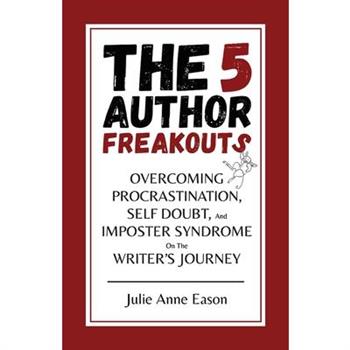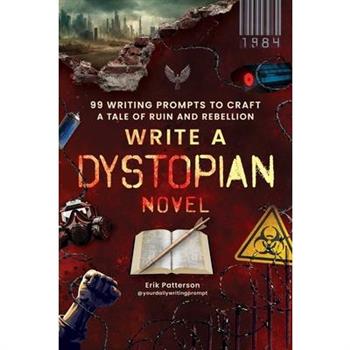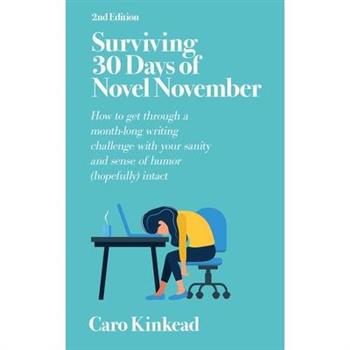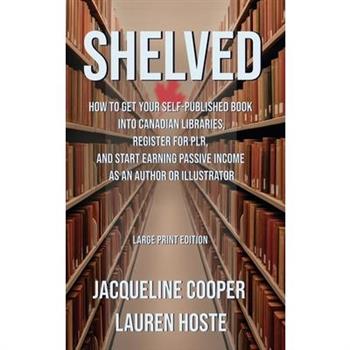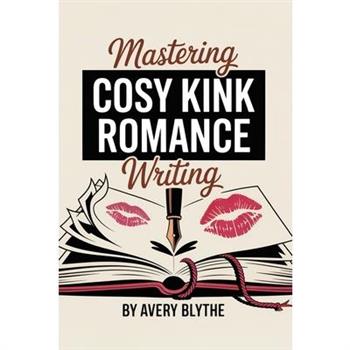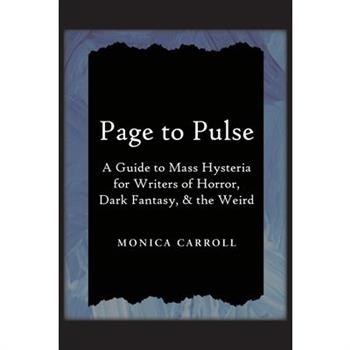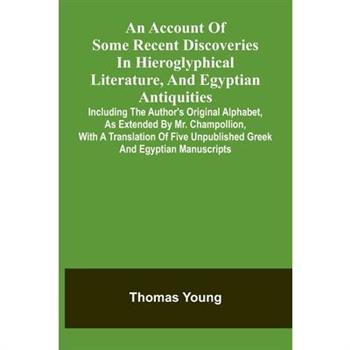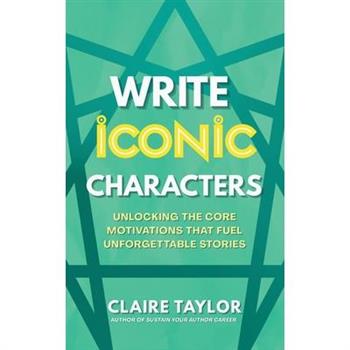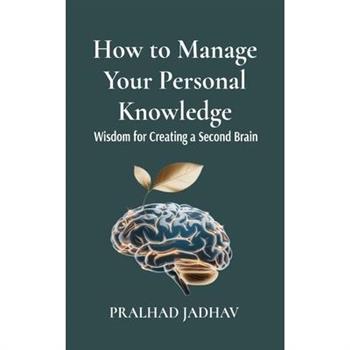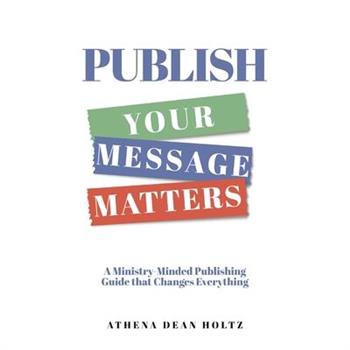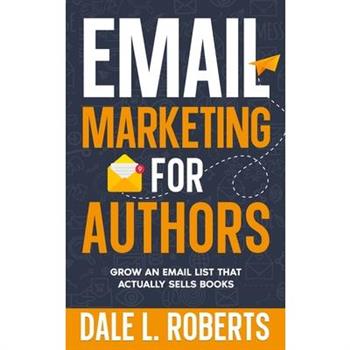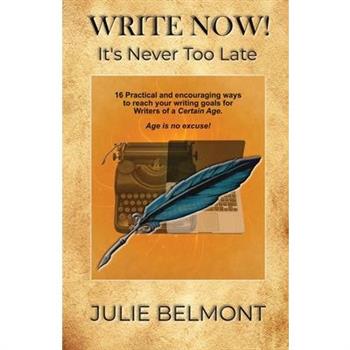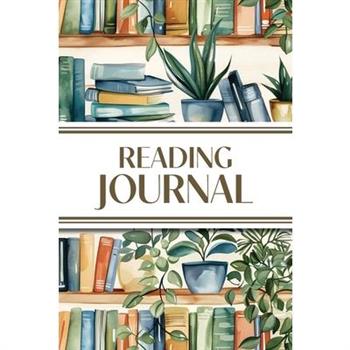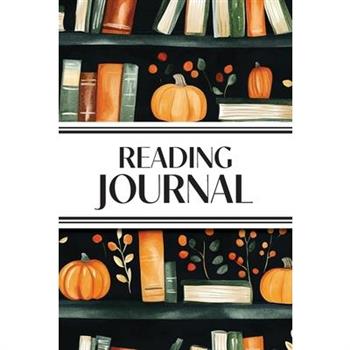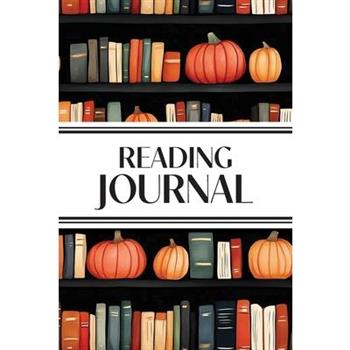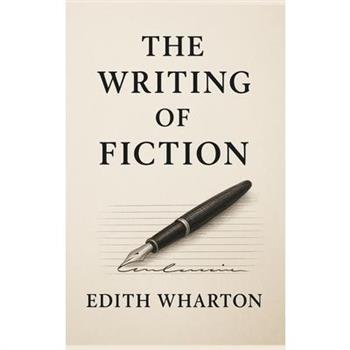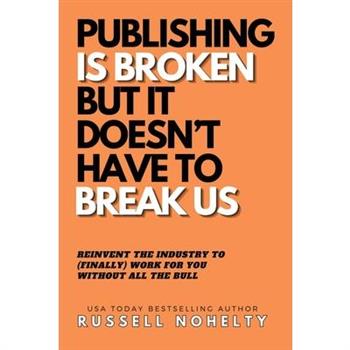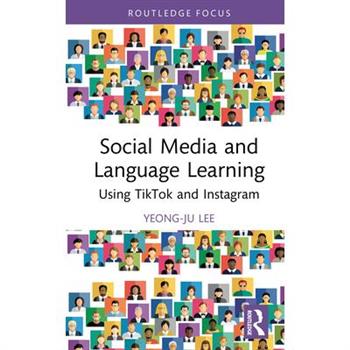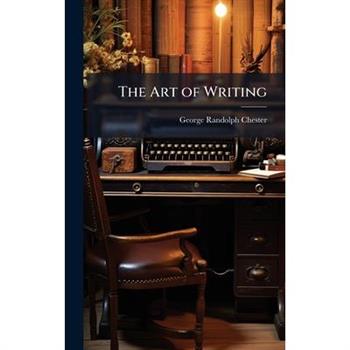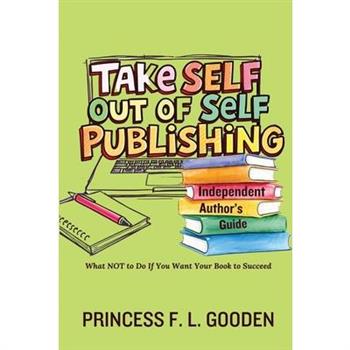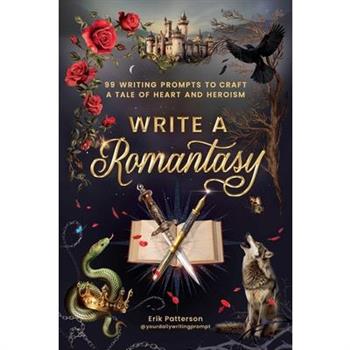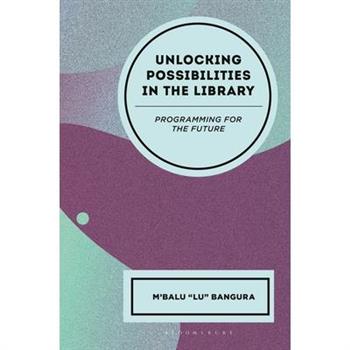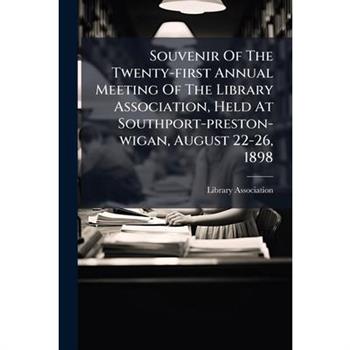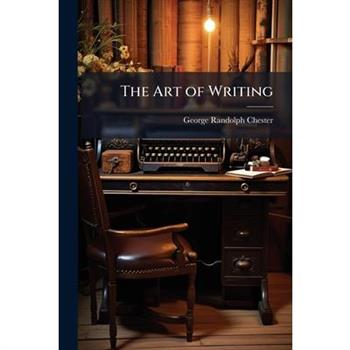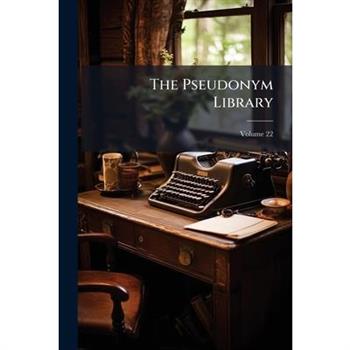Write a Dystopian Novel
Master writer's block and spark your creativity with this workbook full of helpful tips and a variety of prompts for writers of all experience levels to create their perfect dystopian story! Write a Dystopian Novel guides writers of all experience levels through the tropes and themes that exist within the dystopian setting, then provides prompts that will not only engage the writer's creativity but will also beat writer's block and offer a fresh perspective on outdated tropes. First writers will find an interesting scenario for their characters, then they're given brainstorming and writing instructions, and may also find some interesting twists with extra asks about adding additional elements (like a joke or a lie), giving things an extra dystopian spin, or working in a callback. For anyone looking to expand their dystopian writing, this book is a must-have to help complete their story ideas, deepen their worldbuilding, and craft unforgettable, thought-provoking narratives that will captivate readers.
Mastering Cosy Kink Romance Writing
A Novel Approach
Finally-a book on writing that understands how your ADHD brain worksADHD can throw so many hurdles in your path that writing a book feels impossible. A Novel Approach: Strategies for ADHD Writers is written with those obstacles in mind.This book is for you if: You're tired of writing advice that isn't designed for an ADHD brainYou want to write a book but can't get organized enough to startYou have a lot of unfinished books because you keep getting distracted by new ideasYou struggle with motivation, procrastination or forgetfulness so the writing never gets doneYou sit down to write, only to lose focus five minutes laterWith this book, you'll learn how to: Organize your ideas into a framework that will guide you from your first page to the lastDevelop a writing routine that's customized to your unique situation and needsStay focused and motivated all the way through your draft, even when you'd rather be doing anything elseTurn your ADHD into a creative advantage by tapping into your strengthsFull of exercises, case studies and thought-provoking advice, A Novel Approach will show you how to develop new habits and practices that work with, not against your ADHD. ADHD doesn't have to get between you and your dream of being an author! It's time to rewrite the story you've been telling yourself about what you can do, because your ADHD doesn't get the final word-you do.
Write Iconic Characters
Iconic characters build unforgettable stories.Iconic characters stick with us long after the final page. They become touchstones, reference points with which we describe friends, enemies, and ourselves.Creating just one iconic character can transform your writing career. Readers will forgive all sorts of minor flaws in your stories if your characters strike deep into their humanity, connecting with both their light and shadow.Write Iconic Characters reveals the psychology behind unforgettable characters by exploring the nine core fears and desires that drive human behavior. Master these forces, and you'll craft characters whose every choice feels inevitable and stories that readers can't put down.
How to Manage Your Personal Knowledge
Drowning in information? The average person today processes more data in a single day than a 15th-century scholar encountered in a lifetime. Yet we're left overwhelmed, distracted, and struggling to turn fragments of insight into meaningful progress.In this groundbreaking guide, Pralhad Jadhav, a corporate knowledge director, reveals how to build a "second brain" a personalized system to capture, organize, and unleash your knowledge. Drawing on 20+ years at the intersection of libraries, Jadhav transforms library science principles into actionable strategies for the digital era. You'll Discover How To: The Science of Knowledge: Distinguish data from information and information from actionable knowledge (Chapter 3).Proven Systems: Implement frameworks like Tiago Forte's PARA Method, Niklas Luhmann's Zettelkasten, and Digital Gardening to organize ideas for life (Chapters 4, 9).Cutting-Edge Tools: Leverage AI, augmented reality, and adaptive learning to future-proof your PKM (Chapters 8, 11).Real-World Solutions: Overcome information overload, digital distraction, and knowledge decay with battle-tested techniques (Chapters 5-7).Stories of Success: Learn from librarians, students, and professionals who transformed their productivity and creativity (Chapters 1, 10).
PUBLISH Your Message Matters
You feel the nudge to write-but fear, doubt, and distraction keep you from starting or finishing. In Your Message Matters, Christian publishing veteran and ministry leader Athena Dean Holtz equips you with both spiritual encouragement and practical strategies to turn your God-given story into a published message that changes lives.Whether you're exploring how to write a Christian book or seeking Christian publishing tips for a nearly finished manuscript, this faith-filled guide will help you: Clarify your message and audience so your words connect deeplyOvercome self-doubt, spiritual warfare, and the overwhelm of the publishing processWrite from healing, not hurt, so your story brings freedomSteward your book with Christian self-publishing excellence or other publishing pathsShare your message through ministry-minded marketing that feels authentic and Spirit-ledBlending Bible verses for writers, inspiring testimonies, and actionable next steps, Your Message Matters is perfect for aspiring Christian authors, speakers, and ministry leaders who want to write with clarity, publish with integrity, and share their work in a way that honors God.Your story carries His light. Your obedience will carry eternal impact. Now is the time to write-and release-the message He's entrusted to you.
Scholarly Publishing in Transition
Academic visibility and recognition have become more crucial than ever for career advancement and funding opportunities. But how can researchers publish successfully, responsibly, and strategically in the digital age?Ulrich Herb-sociologist, information scientist, publishing consultant, open science expert, and long-time lecturer-takes you on a vivid journey through the world of scholarly publishing and research evaluation. Since 2001, he has advised researchers, academics, and institutions. His extensive experience from countless workshops and consulting projects, paired with a keen eye for trends and pitfalls, makes his insights especially valuable.In this practical guide, he explores current publishing models, explains how peer review, open science, impact metrics, and Creative Commons work, warns about predatory publishing, and offers concrete tips on how to maximize the visibility of your research output.Packed with case studies, methodological recommendations, digital tools, and a critical perspective on reform movements in academia, this book is an essential companion for anyone looking to shape their academic career with confidence and insight.Whether you're just starting out or already an experienced researcher-benefit from Ulrich Herb's expertise, hands-on knowledge, and clear-eyed view of the opportunities and challenges of scholarly publishing in the 21st century.Dr. Ulrich Herb is a sociologist and information scientist specializing in scholarly communication and Open Access. He works as an independent consultant, advising researchers, academic institutions, and policy makers on strategies for Open Science and scientific publishing. Herb has conducted in-depth analyses of major initiatives such as Plan S and has contributed expert reports on various multinational scholarly projects. Widely acknowledged as an authority in the field, he combines practical experience with academic research to advance open and transparent scholarly communication. Dr. Herb is committed to promoting Open Access and Open Science at both national and international levels, regularly leading workshops, publishing critical articles, and supporting infrastructure development for the academic community.
Email Marketing for Authors
You've heard it a hundred times.Email marketing is the key to selling more books.So why haven't you started?Maybe it feels too technical. Too time-consuming. Too easy to mess up. You've got writing to do, and the idea of building a list, crafting automations, or sending emails just sounds exhausting.You're not alone. Most authors avoid email until it's too late. But the truth is, it doesn't have to be that hard or take up all your time.You'll learn how to: Attract the right readers without begging on social mediaCreate lead magnets that convert casual fans into loyal subscribersBuild a simple email system you can stick withAvoid spam filters and keep your emails out of the trashTurn your list into sales, superfans, and long-term incomeWhether you're starting from zero or rebuilding the right way, this book shows you how to grow your email list with purpose and keep your audience engaged for the long haul.Get it now!
Email Marketing for Authors
You've heard it a hundred times.Email marketing is the key to selling more books.So why haven't you started? Maybe it feels too technical. Too time-consuming. Too easy to mess up. You've got writing to do, and the idea of building a list, crafting automations, or sending emails just sounds exhausting. You're not alone. Most authors avoid email until it's too late. But the truth is, it doesn't have to be that hard or take up all your time. You'll learn how to: - Attract the right readers without begging on social media - Create lead magnets that convert casual fans into loyal subscribers - Build a simple email system you can stick with - Avoid spam filters and keep your emails out of the trash - Turn your list into sales, superfans, and long-term income Whether you're starting from zero or rebuilding the right way, this book shows you how to grow your email list with purpose and keep your audience engaged for the long haul. Read it now!
Shelved
You wrote the book. Now it's time to get it into readers' hands and start earning income from it.Shelved is a clear, practical guide for Canadian authors and illustrators who want to see their self-published books in public libraries and register for Canada's Public Lending Right (PLR) program.Whether you're just starting out or already have books in print, this guide covers the steps that matter: How Canadian libraries are structured and how they select booksWhat the PLR program is and how to registerWhat makes a book more likely to be acceptedHow to build a backlist that supports long-term incomeWhen and how to follow up with librariesWritten by two Canadian creators actively working through this process, Shelved offers clear information, encouragement, and a path forward for getting your books into the hands of more readers, through the public shelves they visit most.
WRITE NOW! It's Never Too Late
Book Description for WRITE NOW! It's Never Too LateIt's never too late to author the story you've always wanted to tell.Whether you've dreamed of writing a novel, crafting your memoir, or simply putting pen to paper for the joy of it, WRITE NOW! It's Never Too Late is your inspirational and practical guide to finally making it happen.This book is written primarily for adults, seniors, and "people of a certain age" who think they missed their chance. Spoiler alert: you haven't. Writing is timeless-and so is your imagination.Inside, you'll discover: Simple, step-by-step guidance to help you start writing without fear or procrastination.Encouragement and real-world tips for tackling writer's block, building confidence, and developing a sustainable writing practice.Creative exercises and prompts designed to spark fresh ideas and keep you motivated.Practical advice on publishing options-from traditional publishing to self-publishing-so you can share your words with the world.WRITE NOW! It's Never Too Late, proving that creativity doesn't retire. Whether you're 50, 60, 70, or beyond, you can still become the writer you've always wanted to be.Perfect for: Aspiring authors who've waited too long to begin.Retirees looking for a meaningful and creative pursuit.Anyone who wants to leave a legacy through stories, memoirs, or family history.Writers of all levels searching for inspiration, structure, and motivation.Your story matters. Your voice matters. And the world is waiting to hear it.Don't wait another day-pick up WRITE NOW! It's Never Too Late, and start your writing journey today.
Second Language Pragmatics and Young Language Learners
This book brings together research on second language pragmatics in the underexplored context of EFL primary classrooms. Presenting studies from Croatia, Cyprus, Germany, Norway, Spain and the Netherlands, the book offers a rich exploration of different topics, such as learners' pragmatic performance, awareness and development, learners' and teachers' views on pragmatic instruction, and investigations concerning material use and lesson planning. The studies feature a range of data sources including animated films, arts-based instruction, classroom discourse, narrated picture-based tasks, questionnaires and interviews, introducing the reader to a wealth of opportunities for evaluating young learners' engagement with pragmatics. Being the first edited volume to provide an overview of the rapidly growing area of young learner pragmatics, it will be of great interest to researchers, graduate students and language teachers.
Understanding Love
This book is a true voyage of exploration across the sea of love, approaching the theme through a logotherapeutic and philosophical perspective. The author, PhD Timo Purjo, examines love as the highest value, a fundamental spiritual capacity, and the deepest meaning of human existence. It leads the reader from foundational philosophical principles to concrete life situations in which love is expressed as an attitude, a responsibility, a decision, and a calling. It draws upon Viktor Frankl織s anthropological understanding of the human person, placing emphasis on the role of the will to meaning, self-transcendence, and responsibility in realizing authentic love. The author reflects on love not just as a feeling but as a value that gives direction and purpose to human life. Through philosophical analysis drawing on the insights of M. Scheler, K. Jaspers, E. Fromm, and other important thinkers, Purjo connects the logotherapeutic understanding of meaning with fundamental questions about the nature of love, the challenges it faces, and its potential for growth. Building upon Frankl織s concept of WILL TO MEANING as the cornerstone of logotherapy, Purjo expands the framework by guiding the reader toward a conscious and empowered WILL TO LOVE. The practical dimension of love is also explored as love in interpersonal relationships, in professional settings, love directed toward imperfection, love in suffering and loss, and love for non-human beings and nature. The book includes personal stories that testify to love as a genuine and vital force in life. What makes this book truly unique is that the author does not write from the position of someone who "knows what love is," but rather as someone who searches, learns, and shares with the reader what he has discovered along the way. More than a theoretical exploration, this book is an invitation to pause, reflect, and re-examine the ways in which love shapes our decisions, our relationships, and our sense of purpose. It encourages
Reading Journal (Watercolor Bookshelves with Potted Plants)
Reading Journal - A Book Lover's Ultimate CompanionCapture your reading journey with this beautifully designed Reading Journal-the perfect book lover's diary! Whether you're tackling reading challenges, tracking your favorite books, or reviewing an entire series, this journal keeps all your literary adventures in one place. With dedicated sections for Book of the Month, Book of the Year, favorite quotes, and extra notes, it's the ultimate tool to enhance your reading experience. And if that wasn't enough, each section is bookended by bookshelf coloring pages for you to fill with your favorite reads!Key Features: ✅ Reading Challenges - Stay inspired with fun challenges that help you explore new genres and authors.✅ Book & Series Reviews - Track your thoughts on dozens of books, including entire series recaps.✅ Favorite Books & Quotes - Keep a record of the books that left a lasting impact and the quotes that spoke to you.✅ Book of the Month & Year - Highlight your top picks and reflect on your best reads of the year.✅ Handy Notes Section - Extra space for reading goals, TBR lists, or literary reflections.✅ Compact & Functional - The 6" x 9" size makes it easy to carry anywhere-perfect for book clubs, cozy reading nooks, or on-the-go journaling.Perfect for avid readers, book club members, and journal lovers, this reading tracker will help you document, reflect, and celebrate every book you read. Turn pages, capture memories, and bring your reading journey to life-order your Reading Journal today!
Reading Journal (Watercolor Pumpkins & Leaves in Bookshelves)
Reading Journal - A Book Lover's Ultimate CompanionCapture your reading journey with this beautifully designed Reading Journal-the perfect book lover's diary! Whether you're tackling reading challenges, tracking your favorite books, or reviewing an entire series, this journal keeps all your literary adventures in one place. With dedicated sections for Book of the Month, Book of the Year, favorite quotes, and extra notes, it's the ultimate tool to enhance your reading experience. And if that wasn't enough, each section is bookended by bookshelf coloring pages for you to fill with your favorite reads!Key Features: ✅ Reading Challenges - Stay inspired with fun challenges that help you explore new genres and authors.✅ Book & Series Reviews - Track your thoughts on dozens of books, including entire series recaps.✅ Favorite Books & Quotes - Keep a record of the books that left a lasting impact and the quotes that spoke to you.✅ Book of the Month & Year - Highlight your top picks and reflect on your best reads of the year.✅ Handy Notes Section - Extra space for reading goals, TBR lists, or literary reflections.✅ Compact & Functional - The 6" x 9" size makes it easy to carry anywhere-perfect for book clubs, cozy reading nooks, or on-the-go journaling.Perfect for avid readers, book club members, and journal lovers, this reading tracker will help you document, reflect, and celebrate every book you read. Turn pages, capture memories, and bring your reading journey to life-order your Reading Journal today!
Reading Journal (Watercolor Fall Leaves Bookshelves)
Reading Journal - A Book Lover's Ultimate CompanionCapture your reading journey with this beautifully designed Reading Journal-the perfect book lover's diary! Whether you're tackling reading challenges, tracking your favorite books, or reviewing an entire series, this journal keeps all your literary adventures in one place. With dedicated sections for Book of the Month, Book of the Year, favorite quotes, and extra notes, it's the ultimate tool to enhance your reading experience. And if that wasn't enough, each section is bookended by bookshelf coloring pages for you to fill with your favorite reads!Key Features: ✅ Reading Challenges - Stay inspired with fun challenges that help you explore new genres and authors.✅ Book & Series Reviews - Track your thoughts on dozens of books, including entire series recaps.✅ Favorite Books & Quotes - Keep a record of the books that left a lasting impact and the quotes that spoke to you.✅ Book of the Month & Year - Highlight your top picks and reflect on your best reads of the year.✅ Handy Notes Section - Extra space for reading goals, TBR lists, or literary reflections.✅ Compact & Functional - The 6" x 9" size makes it easy to carry anywhere-perfect for book clubs, cozy reading nooks, or on-the-go journaling.Perfect for avid readers, book club members, and journal lovers, this reading tracker will help you document, reflect, and celebrate every book you read. Turn pages, capture memories, and bring your reading journey to life-order your Reading Journal today!
Reading Journal (Watercolor Pumpkins in Bookshelves)
Reading Journal - A Book Lover's Ultimate CompanionCapture your reading journey with this beautifully designed Reading Journal-the perfect book lover's diary! Whether you're tackling reading challenges, tracking your favorite books, or reviewing an entire series, this journal keeps all your literary adventures in one place. With dedicated sections for Book of the Month, Book of the Year, favorite quotes, and extra notes, it's the ultimate tool to enhance your reading experience. And if that wasn't enough, each section is bookended by bookshelf coloring pages for you to fill with your favorite reads!Key Features: ✅ Reading Challenges - Stay inspired with fun challenges that help you explore new genres and authors.✅ Book & Series Reviews - Track your thoughts on dozens of books, including entire series recaps.✅ Favorite Books & Quotes - Keep a record of the books that left a lasting impact and the quotes that spoke to you.✅ Book of the Month & Year - Highlight your top picks and reflect on your best reads of the year.✅ Handy Notes Section - Extra space for reading goals, TBR lists, or literary reflections.✅ Compact & Functional - The 6" x 9" size makes it easy to carry anywhere-perfect for book clubs, cozy reading nooks, or on-the-go journaling.Perfect for avid readers, book club members, and journal lovers, this reading tracker will help you document, reflect, and celebrate every book you read. Turn pages, capture memories, and bring your reading journey to life-order your Reading Journal today!
The Writing of Fiction
The Writing of Fiction by Edith Wharton is a masterful meditation on the art and architecture of storytelling, penned by one of America's most astute literary minds. With characteristic elegance and precision, Wharton explores the structural integrity of the novel, the moral dimensions of narrative, and the subtle alchemy of character and style. Drawing from both classical traditions and her own formidable career, she illuminates the inner workings of fiction with a voice that is at once rigorous, refined, and deeply human. More than a manual, this is a work of literary criticism steeped in insight and cultivated sensibility-a rare and enduring testament to fiction's highest aspirations.
Early Professional Development in EFL Teaching
Publishing is Broken, but it Doesn't Have to Break Us
Publishing is broken, but it doesn't have to break you. In this candid, no-holds-barred guide, USA Today bestselling author and small-press publisher Russell Nohelty reveals why the traditional publishing model is stacked against most writers, and how to make the industry work for you.Drawing on decades of experience and dozens of successful book launches, Nohelty offers a blueprint for building your creative career without selling your soul or burning yourself out. You'll learn how to break free from tired industry myths, connect directly with the readers who love your work, jettison traditional gatekeepers, construct a sustainable creative life. and leverage simple tools and strategies that actually pay off without all the needless hustle.Whether you're a first-time writer or a seasoned pro, this book offers real-world strategies for breaking free of the status quo. Packed with straight talk, practical insights, and actionable advice, Publishing Is Broken Publishing, But It Doesn't Have to Break Us doesn't pretend there's a one-size-fits-all answer. Instead, it hands you the keys to design a publishing path that fits your goals, your schedule, and your sanity. If you're ready to build a thriving, bullshit-free writing career, this book will show you the way forward.
Social Media and Language Learning
This book explores creative uses of social media for informal language learning, examining how informal language learning adapts to technological innovations in TikTok and Instagram. It offers pedagogical strategies for teachers to integrate newer technologies and multimodal materials into language classrooms to enhance learning experiences.
Practical Project Management for Librarians
Designing Next-Gen Libraries
Recent trends in the advancement of technology, in processes and systems enable humankind to undergo a lot of challenges in upgrading their skills and systems in the information world. One needs to quickly understand these robust changes and adopt them in their work environment to keep pace with the requirements of the users catered to the value-added library services. Thus, the book is aimed to explore such recent trends, tools and technological implementation along with its adaptability of the library systems to help the library and knowledge management practitioners.
English Synonymes Explained, In Alphabetical Order
English Synonymes Explained, In Alphabetical Order is an exhaustive exploration of the nuances within the English language, offering a comprehensive guide to synonymy. Authored by George Crabb, this reference work meticulously dissects the subtle differences between words of similar meaning, providing readers with a deeper understanding of effective communication. The book is structured for ease of use, presenting synonyms in alphabetical order and enriching each entry with copious illustrations and examples drawn from esteemed writers. This approach not only clarifies definitions but also demonstrates practical application within various contexts. Whether you are a student, writer, or language enthusiast, this book is an invaluable resource for enhancing your command of the English language and refining your writing style. Discover the richness and precision of expression with this timeless guide to English synonymes.This work has been selected by scholars as being culturally important, and is part of the knowledge base of civilization as we know it. This work was reproduced from the original artifact, and remains as true to the original work as possible. Therefore, you will see the original copyright references, library stamps (as most of these works have been housed in our most important libraries around the world), and other notations in the work.This work is in the public domain in the United States of America, and possibly other nations. Within the United States, you may freely copy and distribute this work, as no entity (individual or corporate) has a copyright on the body of the work.As a reproduction of a historical artifact, this work may contain missing or blurred pages, poor pictures, errant marks, etc. Scholars believe, and we concur, that this work is important enough to be preserved, reproduced, and made generally available to the public. We appreciate your support of the preservation process, and thank you for being an important part of keeping this knowledge alive and relevant.
English Synonymes Explained, In Alphabetical Order
English Synonymes Explained, In Alphabetical Order is an exhaustive exploration of the nuances within the English language, offering a comprehensive guide to synonymy. Authored by George Crabb, this reference work meticulously dissects the subtle differences between words of similar meaning, providing readers with a deeper understanding of effective communication. The book is structured for ease of use, presenting synonyms in alphabetical order and enriching each entry with copious illustrations and examples drawn from esteemed writers. This approach not only clarifies definitions but also demonstrates practical application within various contexts. Whether you are a student, writer, or language enthusiast, this book is an invaluable resource for enhancing your command of the English language and refining your writing style. Discover the richness and precision of expression with this timeless guide to English synonymes.This work has been selected by scholars as being culturally important, and is part of the knowledge base of civilization as we know it. This work was reproduced from the original artifact, and remains as true to the original work as possible. Therefore, you will see the original copyright references, library stamps (as most of these works have been housed in our most important libraries around the world), and other notations in the work.This work is in the public domain in the United States of America, and possibly other nations. Within the United States, you may freely copy and distribute this work, as no entity (individual or corporate) has a copyright on the body of the work.As a reproduction of a historical artifact, this work may contain missing or blurred pages, poor pictures, errant marks, etc. Scholars believe, and we concur, that this work is important enough to be preserved, reproduced, and made generally available to the public. We appreciate your support of the preservation process, and thank you for being an important part of keeping this knowledge alive and relevant.
The Art of Writing
"The Art of Writing" by George Randolph Chester offers timeless guidance on the craft of effective communication. Addressing fundamental principles of composition, style, and rhetoric, this book provides practical advice for aspiring writers and seasoned professionals alike. Chester explores various techniques to enhance clarity, precision, and persuasiveness in writing, emphasizing the importance of audience awareness and skillful argumentation. This classic guide remains valuable for anyone seeking to master the art of written expression.This work has been selected by scholars as being culturally important, and is part of the knowledge base of civilization as we know it. This work was reproduced from the original artifact, and remains as true to the original work as possible. Therefore, you will see the original copyright references, library stamps (as most of these works have been housed in our most important libraries around the world), and other notations in the work.This work is in the public domain in the United States of America, and possibly other nations. Within the United States, you may freely copy and distribute this work, as no entity (individual or corporate) has a copyright on the body of the work.As a reproduction of a historical artifact, this work may contain missing or blurred pages, poor pictures, errant marks, etc. Scholars believe, and we concur, that this work is important enough to be preserved, reproduced, and made generally available to the public. We appreciate your support of the preservation process, and thank you for being an important part of keeping this knowledge alive and relevant.
Catalogue Of The Sinhalese Manuscripts In The British Museum
This is a comprehensive catalogue of the Sinhalese manuscripts held within the British Museum. Compiled by the Department of Oriental Printed Books and Manuscripts, with contributions from Martino de Zilva Wickremasinghe, the catalogue offers detailed descriptions and insights into a significant collection of historical documents. It serves as an invaluable resource for scholars, researchers, and anyone interested in the rich literary and cultural heritage of Sri Lanka. The entries provide detailed information about each manuscript, including script styles, content summaries, and historical context. The catalogue allows for a deeper understanding of Sinhalese literature, religious practices, and historical narratives preserved within these texts. Researchers gain access to a curated collection, facilitating new discoveries and contributing to the broader field of manuscript studies. This work is essential for libraries, academic institutions, and individuals dedicated to preserving and studying the written history of South Asia.This work has been selected by scholars as being culturally important, and is part of the knowledge base of civilization as we know it. This work was reproduced from the original artifact, and remains as true to the original work as possible. Therefore, you will see the original copyright references, library stamps (as most of these works have been housed in our most important libraries around the world), and other notations in the work.This work is in the public domain in the United States of America, and possibly other nations. Within the United States, you may freely copy and distribute this work, as no entity (individual or corporate) has a copyright on the body of the work.As a reproduction of a historical artifact, this work may contain missing or blurred pages, poor pictures, errant marks, etc. Scholars believe, and we concur, that this work is important enough to be preserved, reproduced, and made generally available to the public. We appreciate your support of the preservation process, and thank you for being an important part of keeping this knowledge alive and relevant.
Take Self Out Of Self Publishing
Transform your self-publishing journey from amateur to professionalIn this unfiltered guide, experienced publisher Princess F. L. Gooden reveals why most self-published books fail-and how to ensure yours doesn't. Drawing from years of industry experience, Gooden explains that successful self-publishing requires removing the "self" from the equation.This comprehensive handbook covers the entire publishing process, addressing critical mistakes authors make in: Pre-writing and planningManuscript developmentEditing and revisionCover design and formattingLegal and business considerationsDistribution strategyMarketing and promotionCareer developmentWritten for serious independent authors ready to treat publishing as a professional business rather than just a creative endeavor, "Take Self Out of Self Publishing" provides actionable advice on producing books that meet industry standards, reach target audiences, and build sustainable author careers. No sugar-coating. No feel-good platitudes. Just the hard-earned truth about what it takes to succeed in today's competitive book market.
Comparison of ChatGPT and Perplexity outputs for a fiction writing task and a factual research task
Which chatbot can help me the fastest and best? This question was explored in a brief experiment with two tasks each for ChatGPT (chatgpt.com) and Perplexity (perplexity.ai). Both chatbots were given identical tasks and the results were then compared. The two tasks were chosen to be as different as possible. The first task was to write a short fiction story. The second task consisted of factual research on a bioscientific-medical topic. The different outputs of ChatGPT and Perplexity for the identical tasks were compared to determine the best chatbot for each task and the intended purpose. Translated outputs as well as original outputs (in German) from ChatGPT and Perplexity are included.
Write a Romantasy
Master the romantasy genre with this ultimate guide full of prompts and tips for aspiring authors and seasoned writers alike looking to craft their dream romantasy novel. Ideal for writers at all experience levels, this workbook offers an abundance of helpful tips and a variety of prompts that will inspire writers to create their perfect romantasy story! This book guides writers through the tropes and themes that exist within the romantasy genre, then provides prompts that will not only engage the writer's creativity, but they will also aid in beating writer's block, spark ideas for uncharted possibilities, and offer fresh perspectives to outdated tropes.
Grammar High School Grades 9-10
Grammar High School Grades 9-10 is a clear, infographic-style grammar guide designed to help students strengthen essential skills for high school writing. Each lesson presents complex concepts in a visual, easy-to-understand format, with examples that make the rules clear.What makes this book different: - Full-color infographic lessons for clarity and retention - CCSS-aligned coverage of key grammar skills for Grades 9-10 - Knowledge Checkpoints with answer key for quick self-assessmentCovers: - Phrases and clauses - Subject-verb and pronoun-antecedent agreement - Verb tense consistency - Sentence structure, variety, and style - Parallel structure and clarity - Punctuation: commas, semicolons, colons, dialogue rulesLesson highlights: - Using different types of phrases: noun, verb, adjectival, adverbial, prepositional, participial, infinitive, gerund, appositive, absolute - Mastering clauses: independent, dependent, noun, relative, adverbial - Building varied, effective sentences with parallel structure and rhythm - Avoiding errors like fragments, run-ons, and comma splices - Applying agreement rules and maintaining tense consistency - Understanding modal verbs and choosing active vs. passive voice - Using punctuation for clarity and styleHow to use this book: Teachers and homeschooling parents can use each lesson as a mini-unit, visual supplement, or formative assessment. Students can use it for independent review, test prep, or writing improvement. It's also ideal for tutoring and intervention programs.
Unlocking Possibilities in the Library
Souvenir Of The Twenty-first Annual Meeting Of The Library Association, Held At Southport-preston-wigan, August 22-26, 1898
This is a souvenir of the Twenty-first Annual Meeting of the Library Association, held at Southport-Preston-Wigan, August 22-26, 1898. It offers a glimpse into the Library Association's activities and discussions during that period. A valuable resource for those interested in the history of library science and the development of library practices in the late 19th century, it provides a snapshot of the issues and concerns facing librarians at the time. The document includes details about the meeting's proceedings, possibly including summaries of papers presented, discussions held, and decisions made. This souvenir offers a unique insight into the professional landscape of librarianship at the turn of the century.This work has been selected by scholars as being culturally important, and is part of the knowledge base of civilization as we know it. This work was reproduced from the original artifact, and remains as true to the original work as possible. Therefore, you will see the original copyright references, library stamps (as most of these works have been housed in our most important libraries around the world), and other notations in the work.This work is in the public domain in the United States of America, and possibly other nations. Within the United States, you may freely copy and distribute this work, as no entity (individual or corporate) has a copyright on the body of the work.As a reproduction of a historical artifact, this work may contain missing or blurred pages, poor pictures, errant marks, etc. Scholars believe, and we concur, that this work is important enough to be preserved, reproduced, and made generally available to the public. We appreciate your support of the preservation process, and thank you for being an important part of keeping this knowledge alive and relevant.
The Joys Of Librarianship
"The Joys of Librarianship" explores the multifaceted world of libraries and the rewarding experiences of those who dedicate their careers to them. Arthur Elmore Bostwick, a prominent librarian and scholar, delves into the historical significance of libraries, the evolving role of librarians, and the intellectual and social contributions they make to communities. This insightful work celebrates the librarian's vital role in preserving knowledge, fostering literacy, and providing access to information for all. Bostwick examines the daily tasks, challenges, and unique satisfactions inherent in the profession, painting a vivid picture of librarianship as both a vocation and a calling. This book offers valuable perspectives for aspiring and current librarians, highlighting the enduring importance of libraries in an increasingly digital age.This work has been selected by scholars as being culturally important, and is part of the knowledge base of civilization as we know it. This work was reproduced from the original artifact, and remains as true to the original work as possible. Therefore, you will see the original copyright references, library stamps (as most of these works have been housed in our most important libraries around the world), and other notations in the work.This work is in the public domain in the United States of America, and possibly other nations. Within the United States, you may freely copy and distribute this work, as no entity (individual or corporate) has a copyright on the body of the work.As a reproduction of a historical artifact, this work may contain missing or blurred pages, poor pictures, errant marks, etc. Scholars believe, and we concur, that this work is important enough to be preserved, reproduced, and made generally available to the public. We appreciate your support of the preservation process, and thank you for being an important part of keeping this knowledge alive and relevant.
Show and Tell
"Show, don't tell" is a mantra every fiction writer hears, but did you know that effective storytelling sometimes requires a balance of both? In this insightful writing guide, veteran novelist Angela Hunt demystifies the art of showing and telling, teaching writers how to use each technique strategically. Discover when to show for maximum impact, when to tell to keep your story moving, and how to craft narration that's vivid, compelling, and purposeful. Complete with examples and hands-on exercises, this lesson will sharpen your storytelling skills and elevate your craft. Everything you need to know in only a few pages, by award-winning novelist Angela Hunt.
The Art of Writing
"The Art of Writing" by George Randolph Chester offers timeless guidance on the craft of effective communication. Addressing fundamental principles of composition, style, and rhetoric, this book provides practical advice for aspiring writers and seasoned professionals alike. Chester explores various techniques to enhance clarity, precision, and persuasiveness in writing, emphasizing the importance of audience awareness and skillful argumentation. This classic guide remains valuable for anyone seeking to master the art of written expression.This work has been selected by scholars as being culturally important, and is part of the knowledge base of civilization as we know it. This work was reproduced from the original artifact, and remains as true to the original work as possible. Therefore, you will see the original copyright references, library stamps (as most of these works have been housed in our most important libraries around the world), and other notations in the work.This work is in the public domain in the United States of America, and possibly other nations. Within the United States, you may freely copy and distribute this work, as no entity (individual or corporate) has a copyright on the body of the work.As a reproduction of a historical artifact, this work may contain missing or blurred pages, poor pictures, errant marks, etc. Scholars believe, and we concur, that this work is important enough to be preserved, reproduced, and made generally available to the public. We appreciate your support of the preservation process, and thank you for being an important part of keeping this knowledge alive and relevant.
The Pseudonym Library
Explore the intriguing world of anonymous authorship with "The Pseudonym Library, Volume 22." This unique volume delves into the history and usage of pseudonyms, offering insights into why authors choose to publish under assumed names. From literary figures seeking to conceal their identities to writers experimenting with different genres, this collection examines the motivations and impact of using pen names. A valuable resource for researchers, writers, and anyone curious about the hidden identities behind famous works, "The Pseudonym Library" offers a fascinating glimpse into the strategies and secrets of the literary world. Discover the stories behind the names and the reasons why anonymity has played such a significant role in the history of publishing.This work has been selected by scholars as being culturally important, and is part of the knowledge base of civilization as we know it. This work was reproduced from the original artifact, and remains as true to the original work as possible. Therefore, you will see the original copyright references, library stamps (as most of these works have been housed in our most important libraries around the world), and other notations in the work.This work is in the public domain in the United States of America, and possibly other nations. Within the United States, you may freely copy and distribute this work, as no entity (individual or corporate) has a copyright on the body of the work.As a reproduction of a historical artifact, this work may contain missing or blurred pages, poor pictures, errant marks, etc. Scholars believe, and we concur, that this work is important enough to be preserved, reproduced, and made generally available to the public. We appreciate your support of the preservation process, and thank you for being an important part of keeping this knowledge alive and relevant.
The Library and the School
"The Library and the School" explores the crucial role of libraries in supporting and enhancing educational curricula. Published in 1909, this work reflects early 20th-century perspectives on integrating library resources into the learning process. The book likely discusses strategies for teachers and librarians to collaborate effectively, methods for promoting reading habits among students, and the importance of access to a wide range of books and materials. It serves as a historical document, shedding light on the evolution of educational philosophies and the growing recognition of libraries as vital components of a comprehensive education.This work has been selected by scholars as being culturally important, and is part of the knowledge base of civilization as we know it. This work was reproduced from the original artifact, and remains as true to the original work as possible. Therefore, you will see the original copyright references, library stamps (as most of these works have been housed in our most important libraries around the world), and other notations in the work.This work is in the public domain in the United States of America, and possibly other nations. Within the United States, you may freely copy and distribute this work, as no entity (individual or corporate) has a copyright on the body of the work.As a reproduction of a historical artifact, this work may contain missing or blurred pages, poor pictures, errant marks, etc. Scholars believe, and we concur, that this work is important enough to be preserved, reproduced, and made generally available to the public. We appreciate your support of the preservation process, and thank you for being an important part of keeping this knowledge alive and relevant.
Catalogue of the Important and Valuable Library of the Late George Offor
A detailed catalogue of the extensive and valuable library of the late George Offor, meticulously compiled for auction by Wilkinson & Hodge Sotheby in 1865. This catalogue offers a fascinating glimpse into the collecting habits and literary tastes of a prominent 19th-century bibliophile. Listing a wide range of books, from rare incunabula to contemporary publications, the catalogue serves as an important resource for book historians, collectors, and anyone interested in the history of the book trade. Explore the breadth and depth of Offor's collection, reflecting the intellectual and cultural landscape of his era. A valuable reference work for understanding the formation and dispersal of significant private libraries.This work has been selected by scholars as being culturally important, and is part of the knowledge base of civilization as we know it. This work was reproduced from the original artifact, and remains as true to the original work as possible. Therefore, you will see the original copyright references, library stamps (as most of these works have been housed in our most important libraries around the world), and other notations in the work.This work is in the public domain in the United States of America, and possibly other nations. Within the United States, you may freely copy and distribute this work, as no entity (individual or corporate) has a copyright on the body of the work.As a reproduction of a historical artifact, this work may contain missing or blurred pages, poor pictures, errant marks, etc. Scholars believe, and we concur, that this work is important enough to be preserved, reproduced, and made generally available to the public. We appreciate your support of the preservation process, and thank you for being an important part of keeping this knowledge alive and relevant.




